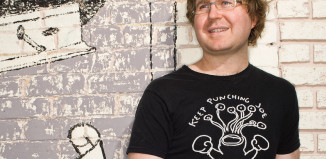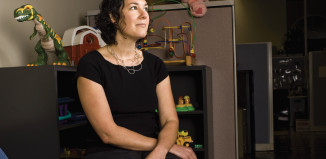A few years ago, with a loss of leadership threatening to permanently close down the organization known as Out Youth, a number of young GLBT people who had been touched by the group through the years decided to speak up.
One young man told Out Youth that the organization’s drop-in center, where he could hang out with other GLBT teenagers and receive counseling and support, was the only place he really felt that he belonged. Others said they didn’t think they would have survived if not for Out Youth.
Comments like those and community support helped Out Youth turn the corner, and today the nonprofit is bigger than ever, reaching out to hundreds of young people every year and forging ahead with new programs and outreach initiatives aimed at one primary goal: ensuring that no young person is left in isolation.
The roots of Out Youth stretch back to 1990, when it began as a program to connect kids marginalized because of their sexuality. The group went through several incarnations before incorporating as a 501(c)3 nonprofit in 1995. Three years later, Out Youth began renting and later purchased its facility on 491/2 Street.
“Originally this was to be a place of support and community for youth who had trouble finding those things anywhere else,” says Matt Smith, executive director of Out Youth. Indeed, at a time before the Internet offered like-minded individuals of any age a link to one another, groups like Out Youth were extremely important. And, in truth, the organization remains a crucial component in the lives of young people who wouldn’t otherwise have a social support structure.
Today, GLBT adolescents sure of their sexuality are coming out at younger and younger ages. That decision is causing them to draw fire from their peers at a stage of their lives already fraught with emotional hardship. Several reputable scientific studies published in the 1990s showed that as many as 40 percent of GLBT adolescents report having attempted suicide. That’s two to three times the suicide rate of young people as a whole.
“The needs of the LGBT community have gotten much more diverse,” Smith says. “We’re serving all of Central Texas and what a youth in a high school in the middle of Austin needs might be completely different than the needs of a youth in Lockhart. We’re the only game around for hours in any direction – so the responsibility is ours.”
Last year, close to 300 young people between the ages of 12 and 19 participated in Out Youth. Interestingly, about 20 percent of those individuals identified themselves as straight. “Anyone who believes in what Out Youth stands for is part of our community,” Smith alleges. “And that includes a lot of straight peers.”
Some participants in Out Youth are out to their parents. Some are out to just one parent, fearful of what the other might say or do. Some come for emotional support. Others come to make friends or maybe find a relationship. Some come just to escape the harassment of their everyday lives.
“It’s really important to us to recognize that youth have the judgment to know what they can handle and what’s going to work out for them,” Smith maintains. “They’re the ones making the decisions and that’s as it should be. Our role is as a partner.”
The drop-in center isn’t just a place to hang out and get counseling. There is a cyber center for surfing the Web and a library for research and studying. Youth are also encouraged by the organization to participate and take leadership roles in activism events, like the recent annual rally on the steps of the Capitol to protest anti-gay bullying in Texas schools.
In an effort to reach out to young people in the region who cannot get to the Central Austin drop-in center, Out Youth has launched satellite communities in San Marcos and Cedar Park where people can gather once a week. The group also initiated the Texas GSA Network, a coalition of gay-straight alliances in high schools across the state. Intended to connect GLBT students with open-minded straight peers, the GSAs have been a lifeboat to many, particularly those struggling with less-than-understanding school administrations. The success of the program, which boasts about 100 alliance groups statewide, has led the Texas GSA Network to become a model for similar efforts nationwide.
Like other advocacy groups, Out Youth is trying more than ever, Smith says, to reach out to transgender individuals, the segment of the GLBT population that remains the most marginalized by society and peers.
“The ignorance and hostility that trans-youth face – we haven’t made much of a dent in eliminating that,” Smith admits. “Transgender individuals are drawing fire for the same reasons as the rest of the LGBT community – they’re breaking society’s rules about gender. Unfortunately, as a group, we’re not always recognizing the commonalities we have.”
As so many young people that Out Youth has worked with through the years age out of the group, there’s been a growing need to maintain a connection with former members. So the organization is launching an alumni association as a way for people to stay involved with the group, serve as ambassadors and give back to Out Youth.
Out Youth operates with just three staff members and the help of countless volunteers. Financially, the group depends heavily on community support, particularly from a core group of monthly donors. There are also a handful of events like the Austin Tennis Club’s Heart of Texas Tennis Tournament and the Hill Country Ride for AIDS that partially benefit Out Youth.
“There’s so much work left to do that we’re not doing yet,” Smith asserts. “We have a huge mission. It’s a matter of having the resources to achieve all that we want to do.”




































